Back in May, we added some new artwork to the studio stairwell: a poster-sized reproduction of the metal sign on the door of a 1947 Voice-O-Graph. Today, we’re adding a new piece of oversize artwork inspired by these iconic machines.
When I visited the Voice-O-Graph at Washington, DC’s SongByrd Music House and Record Cafe last December, I took a bunch of pictures of various details on the machine. One of them that caught my eye is actually pretty small — the brass “patent plate” mounted above the window on the door.
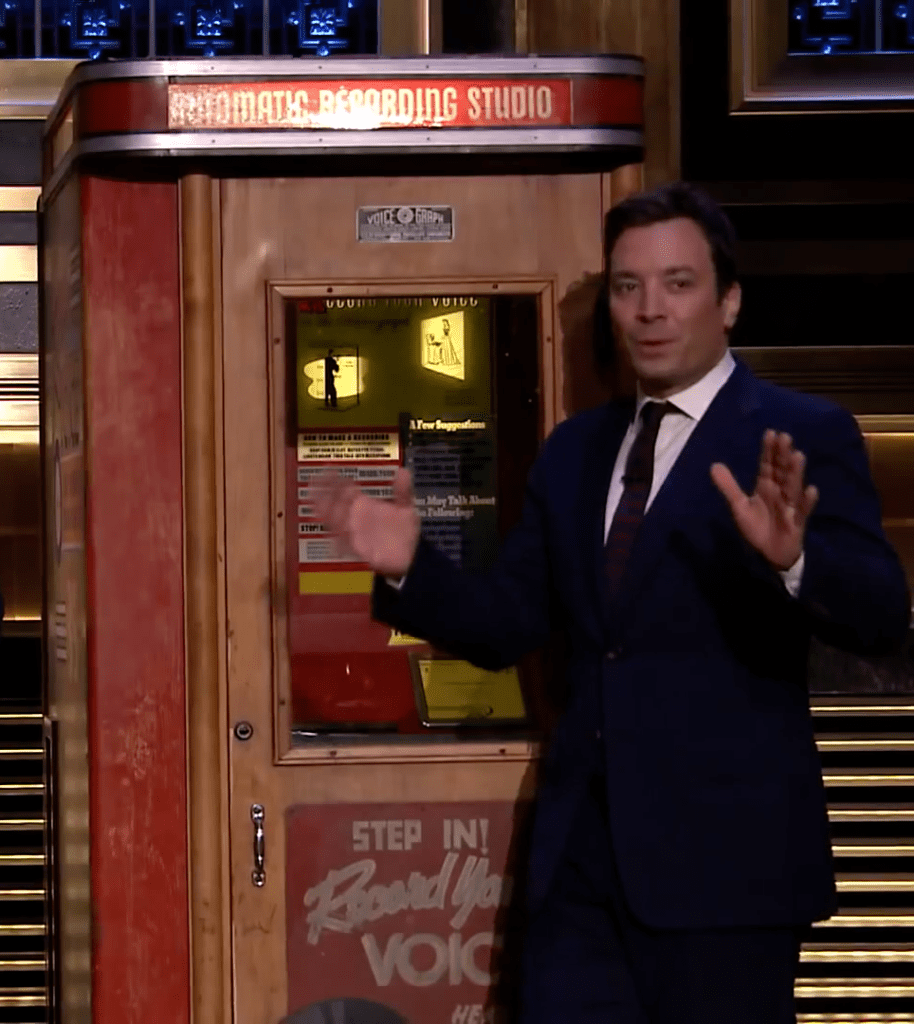
The actual plate is only about 2 1/2 inches tall. It’s roughly at eye level as you walk into the unit, but it doesn’t really catch your eye in real life. But when I took some close-ups with my phone, I realized that it’s actually a pretty cool piece of mid-century design.
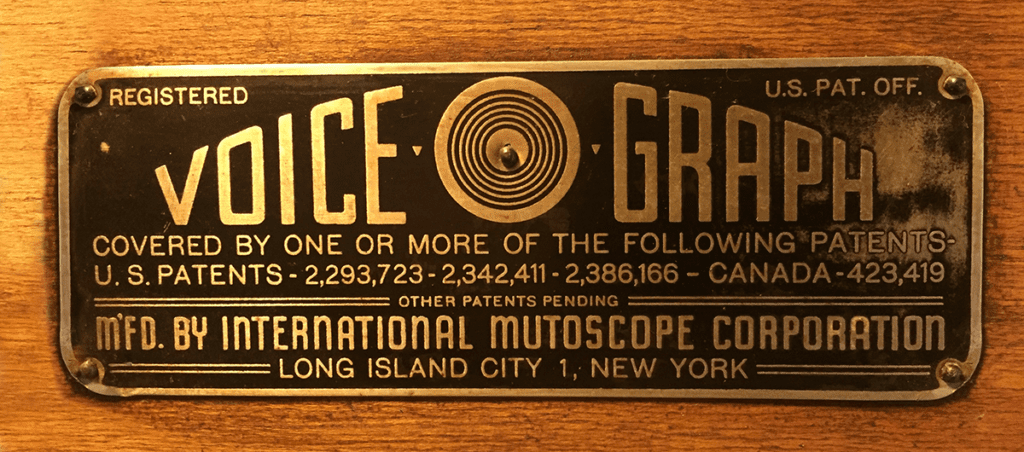
The logo on the plate is similar, but not identical, to the logo the company printed on the record labels (bonus points for how they used the center of the “O” to tack the plate to the wood of the door). And while the patents have long since expired, just the fact that this unit was an “invention” is pretty cool and adds an extra bit of kitsch to presenting the Voice-O-Graph’s “trade dress” as artwork in its own right. I thought it would nicely complement the “STEP IN! RECORD YOUR VOICE” sign already hanging in the studio stairwell. So I sharpened up my Illustrator pen tool once again and got tracing.
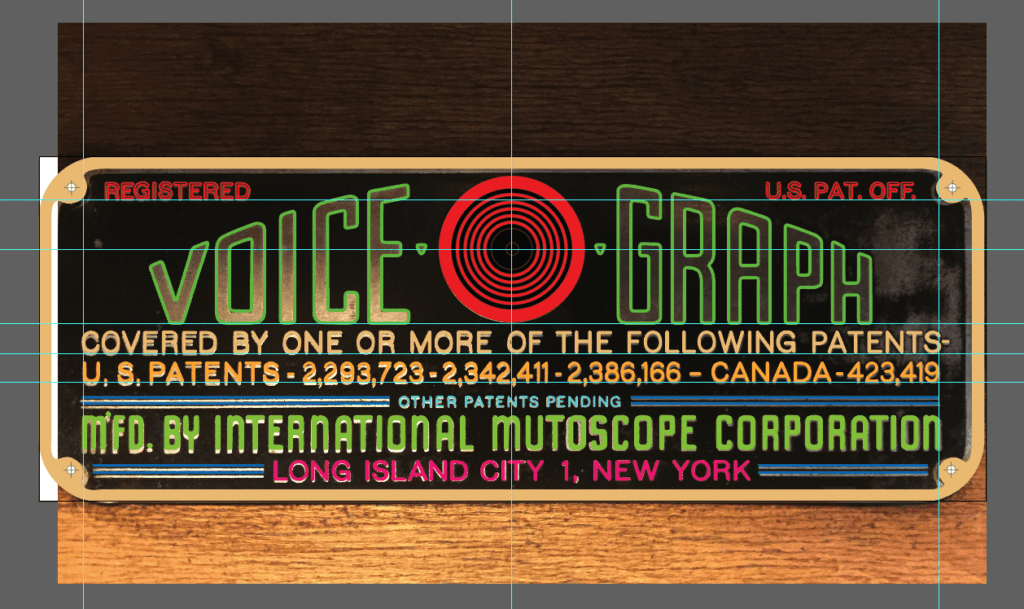
The typeface used for most of the text is similar to a modern font, Avenir Next Rounded. And then there’s font for the name of the company — International Mutoscope Corporation. I don’t know the original name of this classic “Art Deco” font, but Stuart Sandler’s excellent Hamburger Menu font is close enough to provide a starting point from which to work. These signs were originally all “hand spaced”, where the designer would lay out one letter, leave a visually pleasing amount of space, then lay out the next letter. You can’t really duplicate that sort of a manual process using modern spacing algorithms. So if you’re going for accuracy to the original, the only way to do it is to expand each letter to its outline, and then carefully space them one by one. Working with outlines rather than the modern fonts means I can make tweaks to the shape of each character in order to match what was actually stamped on the original plate.
The tracing turned out great. I decided to make an “oversized” patent plate, roughly the same width as the red “STEP IN! RECORD YOUR VOICE” sign, just to make it easier for the viewer to appreciate the plate’s details. I printed a paper mockup to see how it would look.
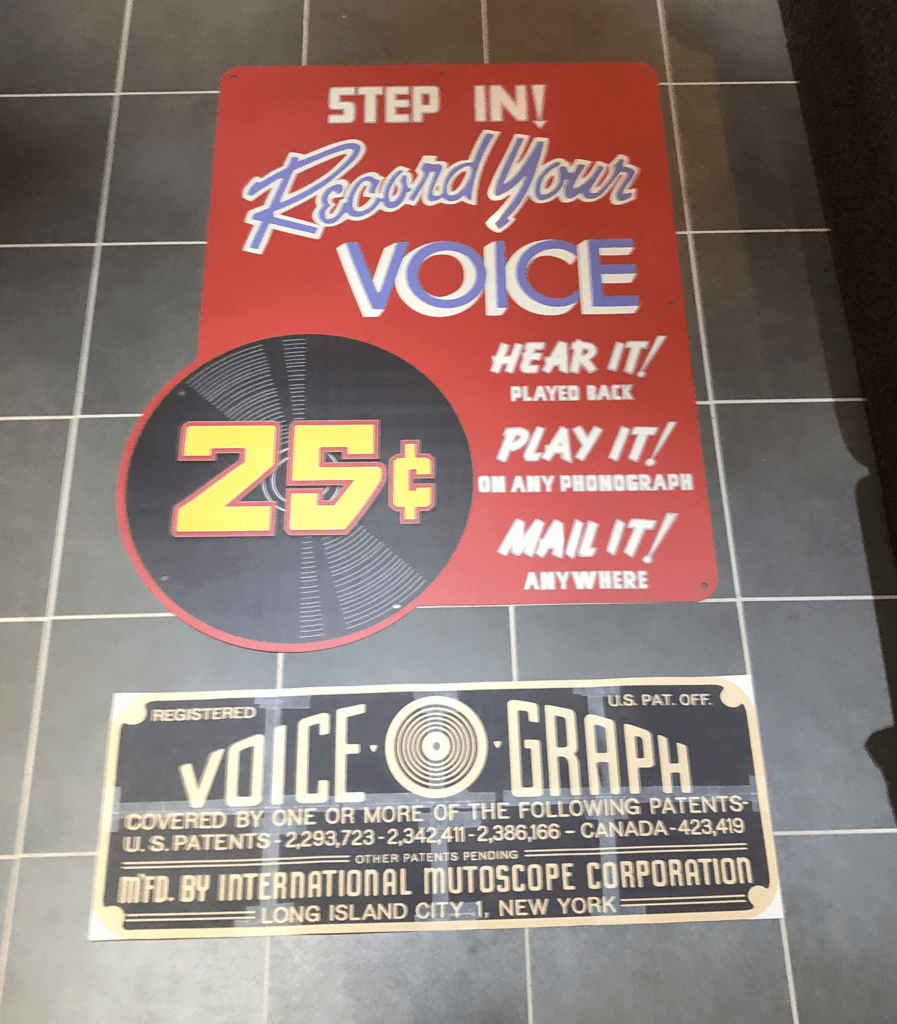
With the tracing finished, time to make the finished piece! The original patent plate used a “filled” process, where the sign’s pattern was stamped using a device similar to a printing press, then “filled” with a paint-like material to black out the background and make the letters easier to read. That’s a great process if you’re making hundreds of something, but since I’m only doing a single, oversized one-off, it doesn’t make any sense to pay to get a stamper made.
Instead, I found a company that can make “laser etched” brass signs. In this process, they spray a blank brass plate with a special laser-reactive ink. Then, the laser is applied to the “negative” part of the sign (that is, the areas that should be black in the finished design) to chemically bond the ink to the brass in those sections. The laser ink covering the “positive areas” — where the brass should show through — can simply be wiped away, leaving the clean brass visible underneath.
The finished sign arrived the other day. It looks awesome.
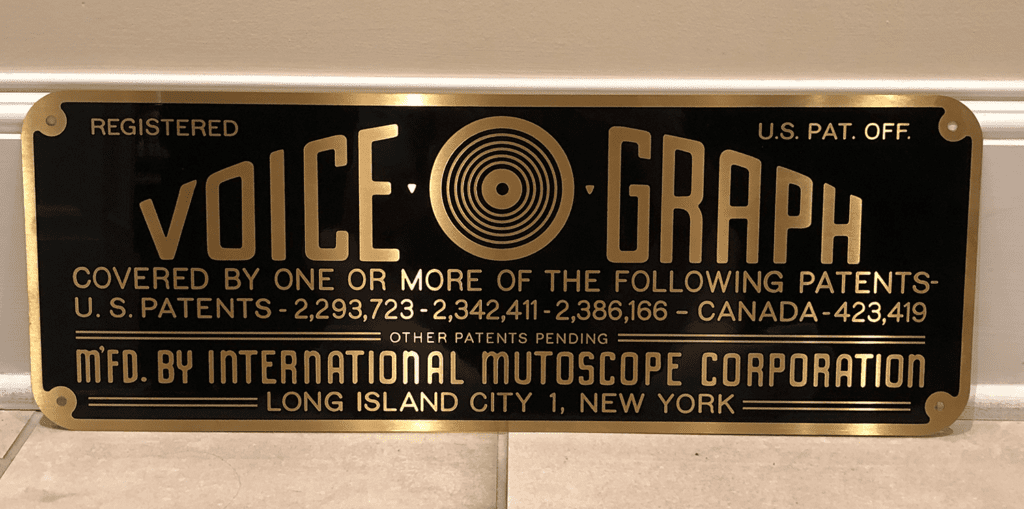
So the second piece of Voice-O-Graph artwork is up in the studio stairwell! The effect is as if you’re stepping into some sort of an oversize machine where you can make your auditory mark on the world. Perfect art for our recording studio!
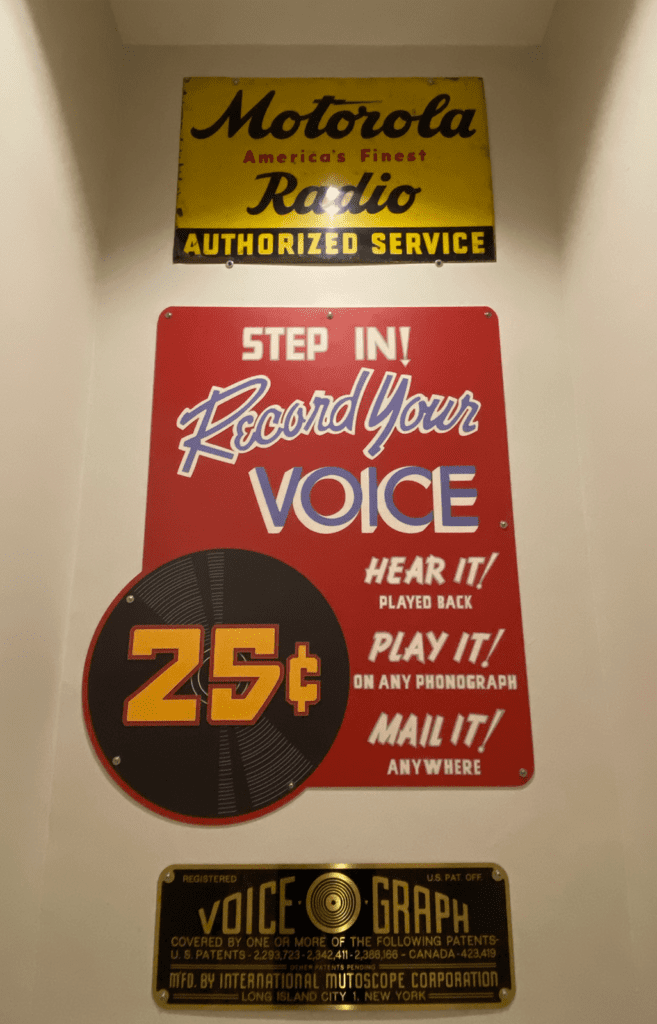
I’ve got some more Voice-O-Graph related artwork ideas I’m kicking around…the wheels keep turning!
NEXT: Read about the “RECORD DELIVERED HERE” sign, a helpful signpost for clients trying to determine where to pick up their final work here at ULS. 😉
Share this:
- Click to email a link to a friend (Opens in new window) Email
- Click to share on X (Opens in new window) X
- Click to share on Facebook (Opens in new window) Facebook
- Click to share on LinkedIn (Opens in new window) LinkedIn
- Click to share on Pinterest (Opens in new window) Pinterest
- Click to print (Opens in new window) Print

